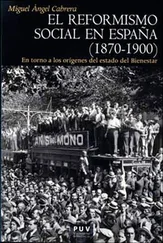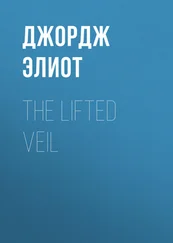My analysis goes beyond the text to try to catch the social and cultural blueprint of Barber’s fiction and autobiographies. The journey is bidirectional: the book scrutinizes the influence of Mormon culture, American Western landscape and historical events in Barber’s books, but it also tries to anticipate the space that those books occupy in the ongoing development of Mormon literature and Western American culture. That is why I decided that I needed to precede my analysis by two introductory sections: a history of The Church of Jesus Christ of Latter-day Saints and a survey of Mormon literature. My analysis requires a certain degree of context within which to frame my statements.
The analysis of Mormon history and literature requires the establishment of some kind of defining parallelism between the American history of the West and Mormon history. Thus, if the American movement towards westward expansion has been important in shaping American character, whether invoking Frederick Jackson Turner’s environmental determinism or not, the Mormon movement is also particularly American and important for the constitution of the American character. Mormon experience of the American West provides a unique approach to American history, but it also complicates it, denoting a sense of belonging and estrangement that amounts to a paradox. Mormonism exerts a pregnant influence on the American West from its very beginning. The Mormon stereotype, as explained by scholars such as Terryl L. Givens and William H. Handley, helped to build American identity both by playing an active role, as Mormons were active participants in the pioneering of the American West, but also by playing a passive role, by comparison and opposition. The burgeoning identity of the new country during the 19 thcentury relied not only on the mythic features which adorned the American West, but also on this identity standing in opposition to other communities, such as the Native Americans, African Americans, Asian Americans, and the Mormons. These were purposefully regarded as different in order to fabricate the new country’s own definition. The American West, and the United States at large, defined itself with the passive help of these communities, but Mormons themselves took advantage of the situation to reinforce their own self-awareness as a community with a new energy based on reactions against these prejudices.
As Wallace Stegner says, Mormons were really “un-American” ( Stegner 104) when they pioneered the American West with a set of values that counteracted the stereotypical image of the Western pioneer: “in place of nationalism, democracy, and individualism I suppose you’d have to put sectionalism, theocracy, and community” ( Stegner 104). Nevertheless, as Stegner himself states when considering contemporary history, Mormons today are at the end of a process of integration that elaborated a balanced picture of specialness and assimilation. Thus, he concludes, “Nowadays I suppose you’d find as many patriots among Utah youth as you do among southern youth” (Stegner, Stegner 104).
These historical considerations provide the background necessary for understanding Barber’s fiction. In this book, I try to give an accurate overview of Mormon history so that the reader is properly equipped to fathom my literary analysis. The social and cultural extrapolations that I perused in Barber’s fiction find a reliable foundation in this way. Contextualization is again required when I approach her writing from a broad angle. My introduction to the history of Mormon literature aims at providing a panoptic exposure of the tradition that supplies Barber’s writing with that indispensable context. This aim required a varied range of methodological approaches but that variety and complexity proves to be consequential to the object of study. In any case, there was a second reasoning to include these two introductory overviews to Mormon history and Mormon literature. As I explain at the beginning of this introduction, Mormon literature is still awaiting the international recognition that it deserves. This was a great opportunity to give visibility to a literary body which stands up to scrutiny on its own but which also works as a valuable contribution to the complexity and diversity that many scholars have been underlining in contemporary approaches to the literature about and from the American West.
The manifold array of methodological approaches is perceptible just by taking a look at the structure of the book. The many similarities, concordances and themes that Barber frequently develops in her writing explain why I concluded that it would be more interesting to organize my research around a number of shared ideas rather than to give priority to the individualizing aspects in each work. The calculated division into four main areas aims at offering a thorough analysis of Barber’s fiction. All four of these main topics are present in her writing. And the four of them required a specific critical corpus to give coherence to the methodology: because the analysis is multiple and diverse, the critical approaches are numerous and varied. This could be seen as a hindrance but, in my opinion, the final outcome verified that this design was nourishing and proficient. The fourfold perspective clearly renders a complete analysis of Barber’s fiction based on a complex network of different paradigms. I try to approach a complex and heterogeneous body of literature within the context of a particular culture and always in relation to a background that offers the same network of tensions and relations. Trying to understand Barber’s different literary qualities in the context of a body of literature that seeks to be included within the wider context of Western American literature and history, while stressing the sense of connectedness with a universal interpretation of literary production, is a tricky task. In order to achieve this balance it is necessary to employ a flexible use of divergent methods and critical approaches.
The strategic elements in this analysis are religion and gender . Subsequently, they occupy a wider space. Barber being raised as a Mormon, and especially a Mormon woman, is very important in her work, both when analyzing her voice as a writer and the construction of her fictional characters. The other two elements in this design are place and art . The idea of place is particularly useful in the analysis of the significance of Barber’s contribution to Mormon and Western American literature, while art covers a broad range of insights from both the technical and moral points of view.
In the religion section, I approach Mormonism as a framework within which I could attain some meaningful analysis of Barber’s literary production. Labels are always complicated and expanded by networks of influences, borders crossed and a general openness to complexity and paradox. As a consequence, and starting—even if briefly—in this introduction, it is important to define what I mean when I use the term Mormon Church and the concept of ethnicity. I also need to clarify how I treat religious appeal.
Catherine L. Albanese gives three different definitions of religion: substantive, functional and formal (xxii). The first approach, the substantive, focuses on the essence and nature of religion. The second approach, the functional, defines religion in terms of how it affects “actual life” (Albanese xxii). Thirdly, if we approach religion from a formal perspective, we are moving into the realm of the history of religions, paying attention to “stories, rituals, moral codes, and communities” (xxii), as Albanese puts it. All three of these approaches are contemplated here, but with unequal intentions and reliability. In her analyses of religions and religious systems, Albanese differentiates between the ordinary and the extraordinary. The ordinary dimension of religion refers mostly to cultural and ethnical levels. The extraordinary dimension is beyond the ordinary—a system of definition that deals with the other: the supernatural. In Albanese’s words, the extraordinary dimension “gives names for the unknown and provides access to the world beyond” (Albanese x). Both dimensions appear in Barber’s work. In Parting the Veil: Stories from a Mormon Imagination , Barber shows that the extraordinary can be an important part of the ordinary in Mormon culture. This chimes with what Hugh Nibley speaks of when he defines two different kinds of social or cultural worlds: the mantic and the sophic. 8In And the Desert Shall Blossom , the ordinary and the extraordinary again blend, this time, in response to the harsh circumstances during the years of the Great Depression and to the character’s personal mischievous ways. John Bennion explains this dimension of the book when he says that it “explores the psychological effects of western Mormonism, an ideology which paradoxically embraces both the ethereal and the earthy” ( And 1). In any case, my approach is based mainly on the ordinary, on cultural and social imperatives and assumptions that induce certain roles and definitions. Even if, in this section, I develop certain topics that provide a glimpse into the conflicts and tensions that flourish in Barber’s literature, the elements of Mormon culture, and faith in general, will continue to be important as I develop other topics in subsequent sections.
Читать дальше












